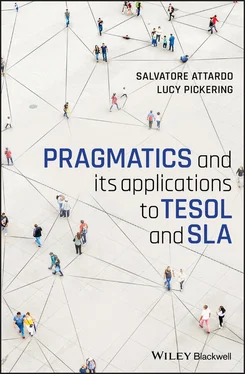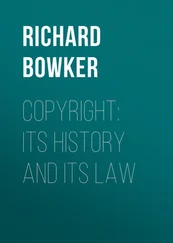3.1.6 Public Commitment for Speech Acts
We have seen that a mutually shared background is necessary for indirect speech acts. There is also another way in which speech acts build on a complex (and generally tacitly assumed) background of social convention. Consider the earlier example of promising. Let’s say that I promised ice cream to the children if they behave. Recall that one of the felicity conditions is to “incur into the obligation to perform the act promised.” In what sense am I obliged to provide the ice cream? The children are probably too little and weak to physically coerce me into doing so and barring special circumstances cannot retaliate effectively. One may argue that I am morally bound to do so, because a righteous person would not falsely (or infelicitously) promise something. Another argument would be that hurting the feelings of the children is again morally or ethically reprehensible. However, these and other appeals to ethics, morality, or kindness do not constitute an obligation.
The obligation is a social one: we live in a culture that values commitment, so much so that it has been institutionalized in the idea of contractual obligation. Entering into a contract means assuming an obligation that is enforceable legally by society. Even if you cannot go to jail for infelicitously promising ice cream to your children, your social status (a.k.a., face, see Chapter 5) will be diminished. Note that this is a different case than the one in which we rescind a promise, that is, we notify the recipient of the promise that we are no longer in a position to fulfill the promise.
Likewise, just as a promise is a commitment made in front of a social group, speech acts “involve intentional undertaking of a publicly accessible commitment” (Green, 2017): it is not enough to have the intention of buying the ice cream, one has to publicly state so (albeit, not necessarily linguistically; recall the bidding by raising a paddle example). This is because a promise is a commitment in front of the speaker’s social group.
There are other approaches to commitments, of course. One approach is to say that one enters in a commitment by voluntarily assuming an obligation. In other words, I am committed to doing something because I want to be committed to it. It is my choice. This approach is rather weak, as it does not distinguish commitments from intentions, except perhaps in terms of length of the commitment. The other approach is to say that one is committed to an action if one’s moral values, goals in life, and so on make it necessary to follow a course of action. So we might say that a Mennonite refuses to serve in the military and becomes a conscientious objector because he is committed to certain religious beliefs. However, speech acts, as we saw, require a public commitment, in order to establish their force as such. Note in passing that internal commitment (what one thinks) and external commitment (what one makes explicit) may differ, for example, in the case of lies or hypocrisy.
Recent work on speech acts has focused on debating the nature of the constitutive rules of speech acts. In other words, are speech acts linguistic or social conventions, much like the rest of linguistic signs (recall the arbitrariness of the connection between signifier and signified), or are they based on the speakers’ intentions (if the speaker intends to perform an act and their intentions match a set of felicity conditions, then they have made a promise, e.g.), or on the functions for which they are used in conversation, or are they expressions of a state of mind of the speakers, or are they constituted by social norms? Norms are more stringent social requirements than conventions: for example, it is a convention that people should line up at check out registers, but it is a norm that one cannot drive on the left, in the United States. Violating the former will get you nasty looks, violating the latter will result in a hefty fine.
Another interesting approach is based on the idea of “conversational score” or the “common ground” shared by the speakers (see Section 8.3). When someone utters a sentence, the audience updates the conversational score with the content of the proposition of the utterance, but also of its presuppositions, and implicatures. So, for example, Attardo uttering My favorite painting by Vermeer is “View of Delft.” both updates the conversational score with the fact that Attardo’s favorite painting by Vermeer is View of Delft and that Vermeer is a painter. In other words, both facts are now publicly accessible, as well as the fact that Attardo uttered the sentence and so he is committed to its truth, under normal circumstances (e.g., he is not being ironical). The idea of a common ground or a conversational score that is accessible to all participants turns out to be an important one that will recur in the discussion of context (Section 8.3), of the definition of what is old and new information in a sentence (Section 6), and of course of Grice’s definition of nonnatural meaning (see a short discussion in Section 4.1.6). An excellent summary of the discussion can be found in Harris et al. (2018).
In this chapter, we have presented an approach to pragmatics that is in a sense antagonistic to the truth-functional approach to meaning seen in Chapter 1, since it sees the purpose of language as “doing things.” However, from another perspective it is totally compatible with it, given that it sees an utterance as expressing a proposition along with an illocution, that is, the speech act. As we will see in Chapter 7, this is a common approach to the description of stance. We have considered in detail the mechanisms that make speech acts work, that is, felicity conditions and indirect speech acts, that is, the ways in which a speaker says one thing but means another one. This required us to introduce the concept of “implicature,” which will be a central topic of the next chapter. However, before we turn to this subject, we need to address the ways in which research in speech acts has been applied in teaching and SLA.
3.3 Speech Acts in SLA and Applications to TESOL
The investigation of speech acts in SLA and its applications in classroom instruction is one of the successes of the story of pragmatic instruction in TESOL. This is in part because it is “low hanging fruit” compared to many other aspects of pragmatics. As we noted in Chapter 2, every language develops ways to request something or apologize to someone because they are ubiquitous acts in human interaction, but not every language may develop highly ritualized uses of honorific particles, for example. In addition, because of the pervasive nature of speech acts, their expression is highly conventionalized as we noted earlier. For example, in American English, apologies typically comprise three parts:
1 the reason for the apology (e.g., I’m so sorry I’m late );
2 explanation of responsibility (e.g., the bus was late/You know me, I’m never on time ); and
3 offer of repair/promise that it will not happen again (e.g., I’ll catch up with Tom regarding the meeting/This won’t happen again ; Blum-Kulka & Olshtain, 1984).
There are also expected sociopragmatic contexts in which they are performed (e.g., coming in late for a meeting) and standard pragmalinguistic formulas with which they are expressed (e.g., I’m so sorry , I want to apologize ). Any one of these three facets of speech act production can change cross-culturally. We can demonstrate this using the speech act of complimenting.
In American English, Herbert (1986) suggests that a compliment structure is a two-part routine, and the response to the initial compliment will be one of three choices:
Читать дальше












